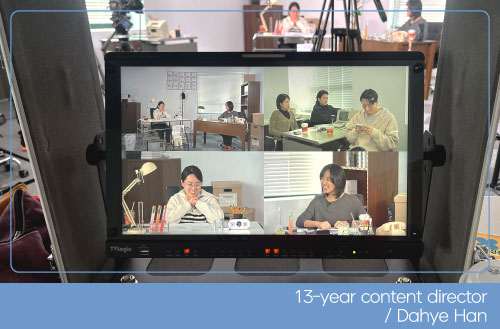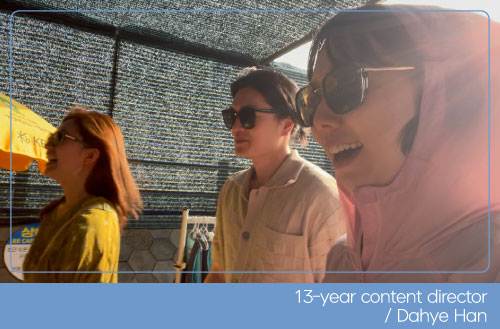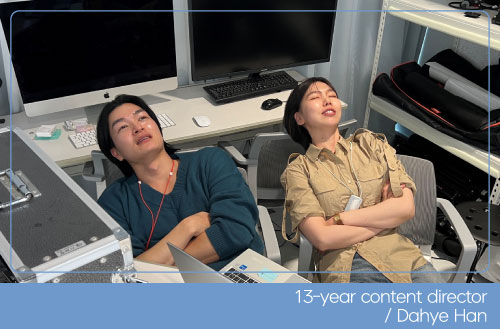
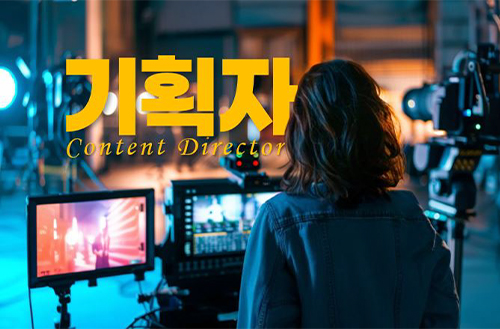
How Can We Excel in Planning?
The Thoughts Behind Launching a Brand YouTube #4

Columnist
Da-hye Han Makeup Professionals Team

#INTRO
Last year, I attended a session at Amore Hall on Adobe’s generative artificial intelligence service, Firefly.
Each demonstration of AI technology—whether it was generating images from simple prompts, meticulously isolating individual strands of hair, refining audio plagued by noise, or editing with precise timing based on text inputs—elicited gasps of awe from the audience. A colleague beside me, a design major, sighed wistfully. “When I was in college, our grades depended on how cleanly we could isolate subjects from backgrounds,” she remarked. The era is swiftly approaching where the skills we once honed through relentless effort are becoming increasingly effortless and accessible.
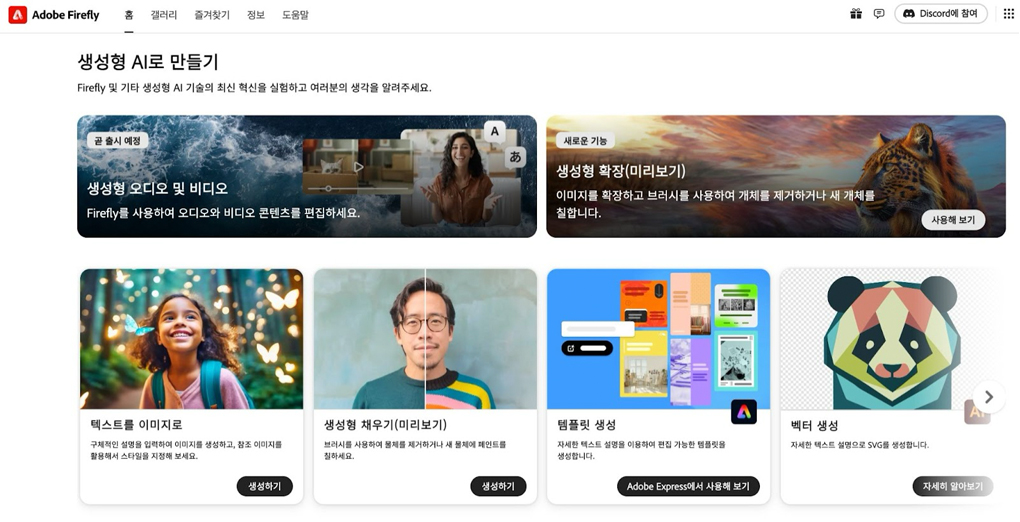
Features of Adobe Firefly’s Generative AI
1 I Embrace This Current
I welcome this current because I believe that in the age of AI, survival hinges not on being a ‘technician’ but a ‘planner’—the one who conceives ideas and makes decisions. Production programs are becoming increasingly intuitive and user-friendly. The challenges we once faced to achieve desired outcomes are being systematically addressed. Technicians who merely operate under a director’s instructions will find their roles diminishing.
Surprisingly, my most frequent question is, “Do you also handle the editing yourself?” When production schedules are tight or the desired outcome is clear yet challenging to articulate, I occasionally manage Adobe Premiere Pro directly. However, as I have maximized the number of content projects I oversee, I strive to delegate time-consuming tasks appropriately. Managing multiple projects simultaneously demands efficient time management. Therefore, I have designed processes where I oversee mastering at each stage—such as rough cuts, final cuts, mixing, and design—and proceed to the next phase only after my confirmation. This approach allows multiple processes to run concurrently while focusing on producing effective results.
Whether they’re the creative director of a high-end brand, a film director renowned for mise-en-scène and detail, or a producer of a top idol group, their success stems from their ability to recruit, deploy, and decisively declare what works and what doesn’t with the help of skilled technicians. Their strength lies not in their proficiency with software but in recognizing the best talent, collaborating effectively, and making final decisions.
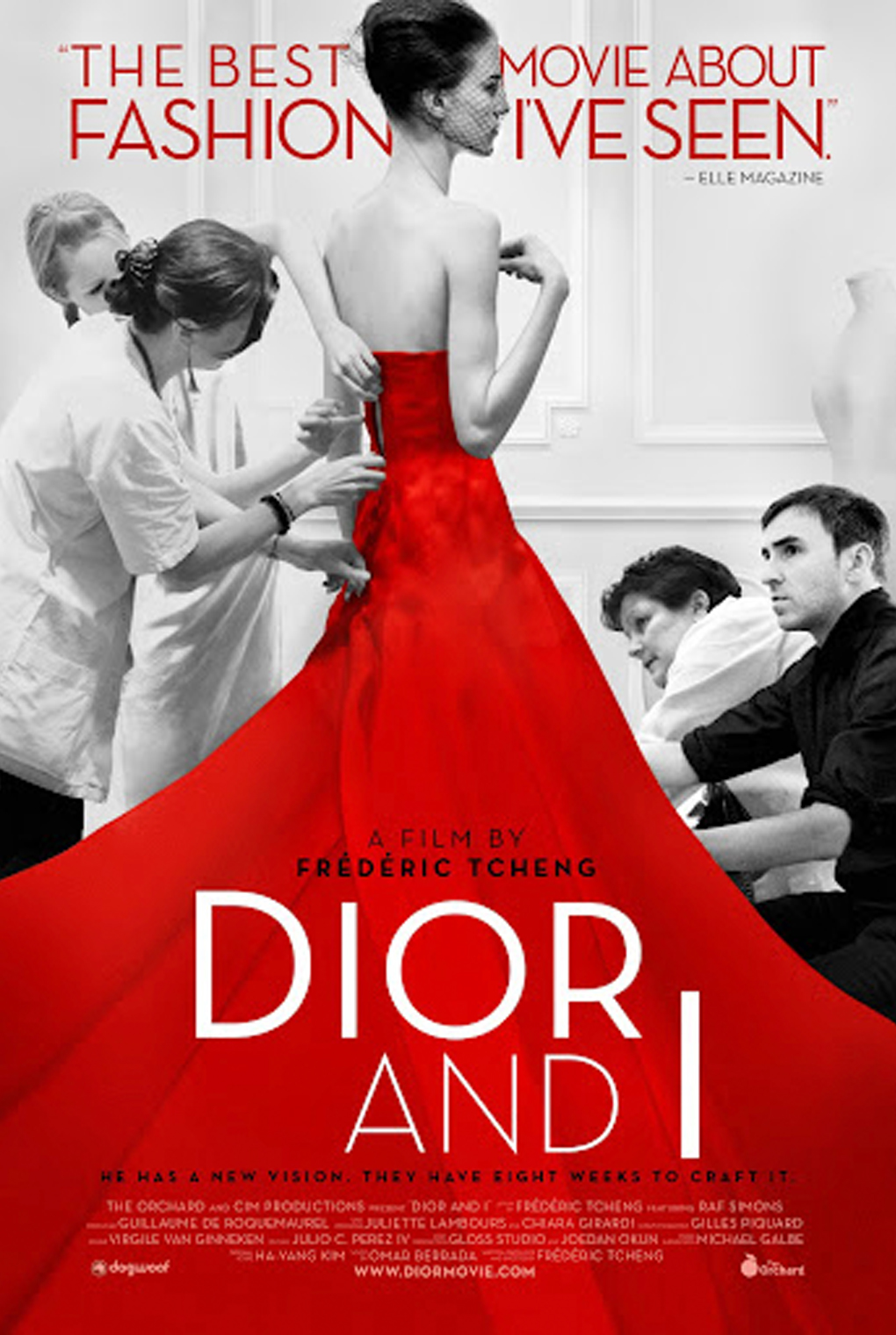
The documentary "Dior and I,"
which illustrates how a director successfully manages projects by assembling and coordinating experts from various fields
2 For Planners, the ‘Ability to Request Well and Admire Accurately’ Is Crucial
When handing over desired drafts to designers, stylists, and technical directors, it is essential to respect their expertise and leave room for creative freedom to keep their motivation high. I frequently ask experts questions, honestly admit when I lack knowledge, and seek their assistance. I take responsibility for the outcomes and make it a point to share credit with everyone involved when projects succeed.
Whenever I have the opportunity to mentor, the message I convey most often is, “You need to be a planner, not just a technician.” Over more than a decade, I have honed the art of strategic planning by leading various projects with the help of experts. The core of planning lies in creating systems that maintain consistent quality while allowing for repetitive output. I have organized critical insights gained from developing my expertise to benefit my juniors.


If asked what the current trend is, I find it difficult to answer succinctly. Individual content consumption is increasingly dictated by personal algorithms, making it challenging to define universal trends. Moreover, I rarely engage with short-form content like TikTok or Reels, which spread trends rapidly. I find them exhausting, and instead, I continue to enjoy reading paper newspapers, love the written word over videos, and always keep poetry and criticism close by—elements that are unlikely to sell. Throughout my career, while striving for commercial success and broader recognition, my ultimate dream remains to create purely beautiful art that is endlessly graceful and far removed from the latest fads.
I often tell my juniors that merely scouring TikTok or Reels when producing content is a flawed approach to learning. Obsessing over immediate trends narrows one’s perspective and shallowly undermines the depth of planning. One must cultivate a broader and deeper vision to create something truly contemporary.
I want to share some underlined passages from books I love.
"You must immerse yourself in great works.
Read the finest literary masterpieces, watch iconic films,
closely appreciate influential paintings,
and visit renowned architectural landmarks.
Even if your goal is to create fast food,
having experiences with the freshest ingredients
will enable you to produce tastier fast food.
It’s a call to align your internal standards with greatness.
By doing so, ultimately,
we can make countless better choices
that may lead to great works."
— The Creative Action: A Way of Being (Rick Rubin)
Our internal standards ultimately determine the quality of the content we create. We must not neglect to elevate our discernment and hone our aesthetic sense. The depth found in campaigns crafted by top creative directors, masterpiece films that move audiences worldwide, and timeless literary works are values not easily attained. Explore the creative strategies employed in projects with the highest capital and technology, and examine how emotions are conveyed in the beautiful sentences penned by poets. Instead of following trends, establishing your vision and standards is essential to becoming a planner who creates trends themselves.

Don’t indiscriminately seek out only the ‘successful’ examples. While referencing successful cases can be helpful, accumulating too many references can easily confine you within them. Above all, the most crucial aspect is the style that emerges from the planner’s accumulated sensibilities. By uniquely directing and creating, you will undoubtedly attract those who appreciate your flavor.
You might recall how content like the David Hockney-style SSG campaign or Binggrae’s Instagram received significant attention in the past. Content that is particularly noteworthy in each era tends to emerge sporadically. However, if you belatedly decide, “Let’s try the 000 style, too,” it merely ends up as a derivative of someone else’s work.
I am drawn more to the unfamiliar and the odd rather than what is familiar and appears stylish. Content that mimics others is easily consumed and forgotten, but original and fresh content remains memorable and vibrant. Of course, when searching for good references, there are times when something particularly resonates. Carefully examine its essence in those moments and reinterpret it in your style. Combining elements in a completely new way is far more enticing.
When I need to clear my mind from work, I open a magazine or browse Pinterest. I casually flip through and often pin images that catch my eye for no reason. These unthought-of saved images later prove helpful in various creative processes such as visual planning, copywriting, and scene composition. When searching for references, don’t approach it too analytically; instead, freely drift and collect elements you can absorb into your style. As these accumulate, they can become the seeds of original planning.
Ultimately, references should be used not as subjects for analysis but as starting points for inspiration. For planners, the ability to create something new without losing their direction is more important than merely following trends. Therefore, I always say: Relax and comfortably find your style, then plan accordingly.

The success of viral content seems to hinge most significantly on 'luck.' The platform's mysterious algorithms, keywords that suddenly gain attention at the right moment, and some inexplicable subtle forces all play substantial roles. Consequently, when we analyze past blockbuster content, elements that defy logical explanations often linger as mysteries.
I am more intrigued by 'strangely failed content' than blockbuster hits. Consider terrestrial programs that launched with top entertainers during prime time but were quickly canceled or YouTube channels that consistently posted trending videos yet received negligible engagement. By asking, "Why didn't this work?" I can uncover more profound insights. Delving into the causes of these failures clarifies what should not be done, which forms the foundation of a Not-to-do list.
When planning, it's crucial to establish criteria such as "I absolutely will not do this." For example, there are several practices I have committed to avoiding on HERA’s YouTube channel. Firstly, I ensure that models do not sit like mannequins during makeup scenes. Such poses feel outdated, unnatural, and even intimidating. Therefore, I always direct models to exhibit natural reactions and ask them questions to foster genuine interactions.
Additionally, I refrain from unconditionally proclaiming that our products are the best. Far too many brands repeatedly assert, "This product is the best," which can quickly erode trust. Instead, I encourage participants to use the products naturally, showcasing their genuine reactions and experiences.
Thirdly, I do not make participants memorize scripts. I focus on creating an environment where they can relax and express themselves freely. A natural and sincere flow enhances the content’s appeal more than a staged performance.
Predefining what should not be done before commencing planning makes the direction more apparent, and the resulting content maintains consistency. Through experience, I have come to understand that establishing and adhering to consistent principles is essential for preserving the identity of the content.

As a content planner, pursuing your convictions within the constraints of predetermined materials and budgets is essential. To be honest, I rarely heed opposing opinions or remarks like “Someone was criticizing you for doing it this way” because I believe in the direction I am pursuing. Like a stubborn autocrat, a planner who is challenging to communicate with can become problematic. However, I often say, “Planners need some guts!”
Planners constantly grapple with countless options and face immense deliberation at every moment. In that process, it is essential to maintain your convictions that remain unshaken by passing comments from others upon seeing a fragment. This is especially true when ‘those opinions’ are based on someone else's preferences.
Many opinions are exchanged when planning content; sometimes, hurtful remarks can surface. Attempting to please everyone can dilute the most critical aspects, rendering the content bland and the intent vague. Instead, when I encounter someone who says, “I’m enjoying this,” I delve into specifics like “Why do you like it? What exactly made you laugh?” Focusing on enhancing what is already working rather than striving to improve yields more significant results. Identifying strengths and further developing them is an efficient growth strategy for planners.
When I feel drained or lose momentum while creating content, I open a folder of captured supportive comments and messages from colleagues. This rejuvenates me and dramatically helps me reaffirm my direction. Focusing on positive feedback during planning and using those encouraging words as a compass to move forward is my most significant source of motivation. So, trust in those supportive words and keep moving forward!

One of the most crucial elements in creating content that fosters a dedicated fandom is the ‘sustainability of production.’ To maintain longevity, planners must craft messages imbued with sincerity and establish values they wish to leave behind in the world. The degree to which one approaches content creation earnestly and integrates personal philosophy ultimately determines long-term success. Content that merely dazzles on the surface tends to be quickly consumed and forgotten.
When I meet someone new, I find my heart opens when they shed their armor of ‘adulthood’ and share their genuine stories. Their unique charm emerges in those moments, revealing clues that inspire planning within their narratives. A planner must draw inspiration from these essential stories and translate that uniqueness into compelling content. While managing HERA’s YouTube channel, instead of mimicking the typical "top beauty YouTuber style," I infused curiosity and affection for people into the content. We produced talk shows centered on the experiences of those who create our products and crafted light-hearted documentaries showcasing the beautiful lives of individuals with unique professions. Additionally, I launched a vlog series that captures the daily lives of makeup artists I admire.
When planners design content that genuinely reflects their interests and curiosities, the production process becomes enjoyable, and that enthusiasm naturally resonates with the audience. Content moves people not due to technical perfection or dazzling visuals but because the creator’s heartfelt sincerity and unique perspective shine through. Fandoms originate from this authenticity and gradually evolve into a powerful force that sustains the content and the brand.
Ultimately, the essence of enduring content lies in authenticity. By sincerely conveying the planner’s voice and weaving meaningful stories, the very essence of the content is created. Only then can genuinely beloved content be produced!
-
Like
5 -
Recommend
1 -
Thumbs up
1 -
Supporting
1 -
Want follow-up article
1



